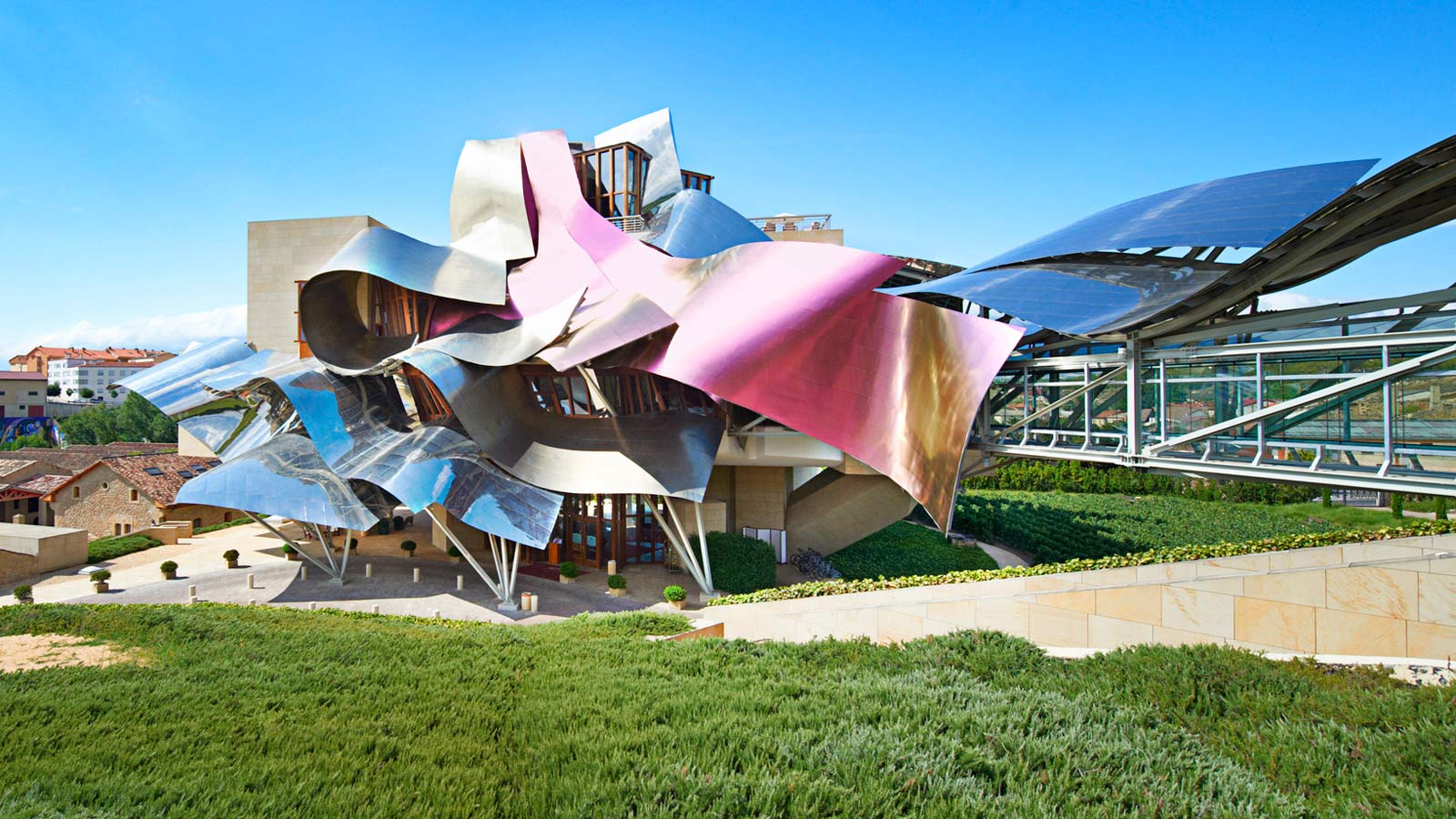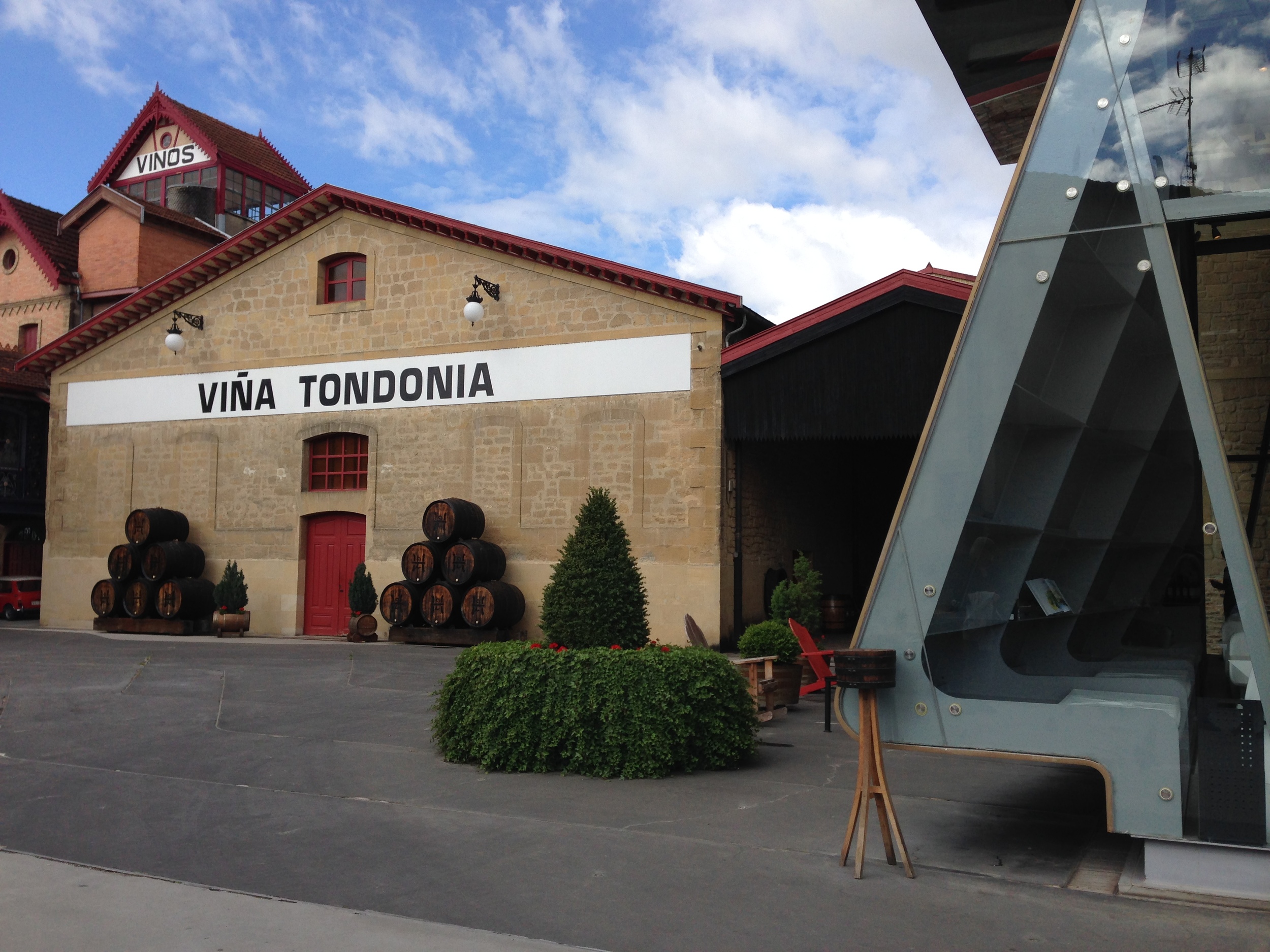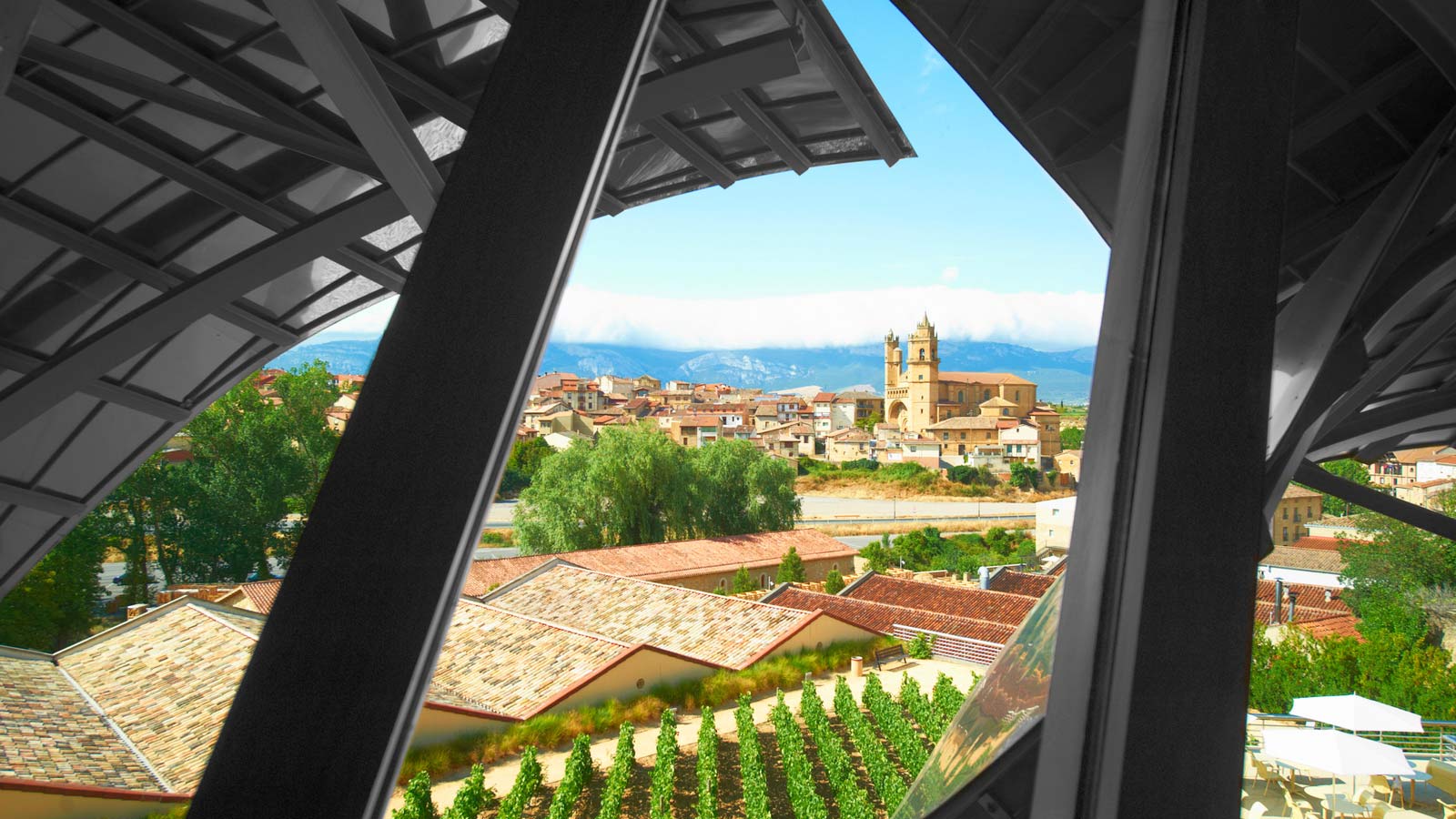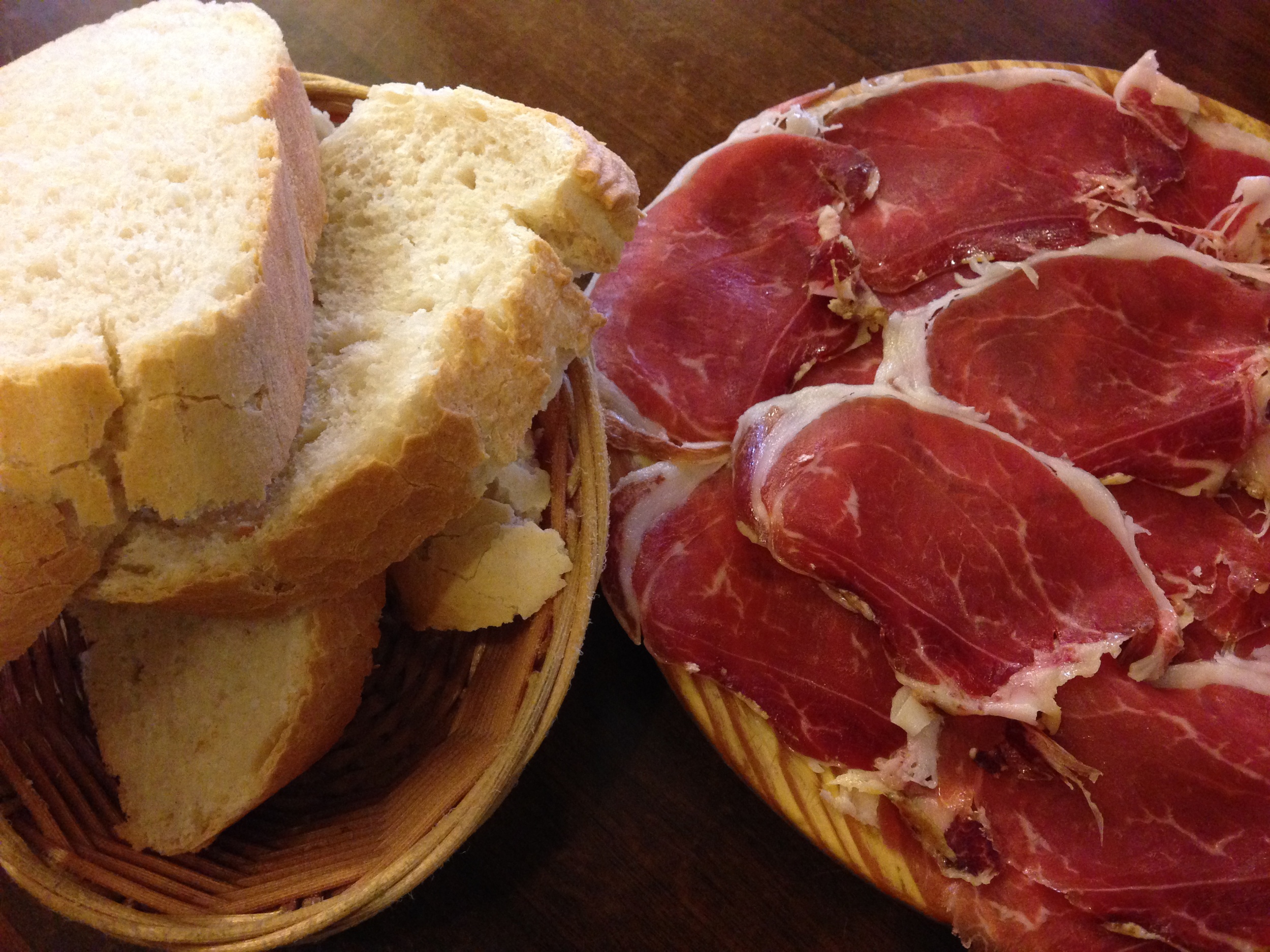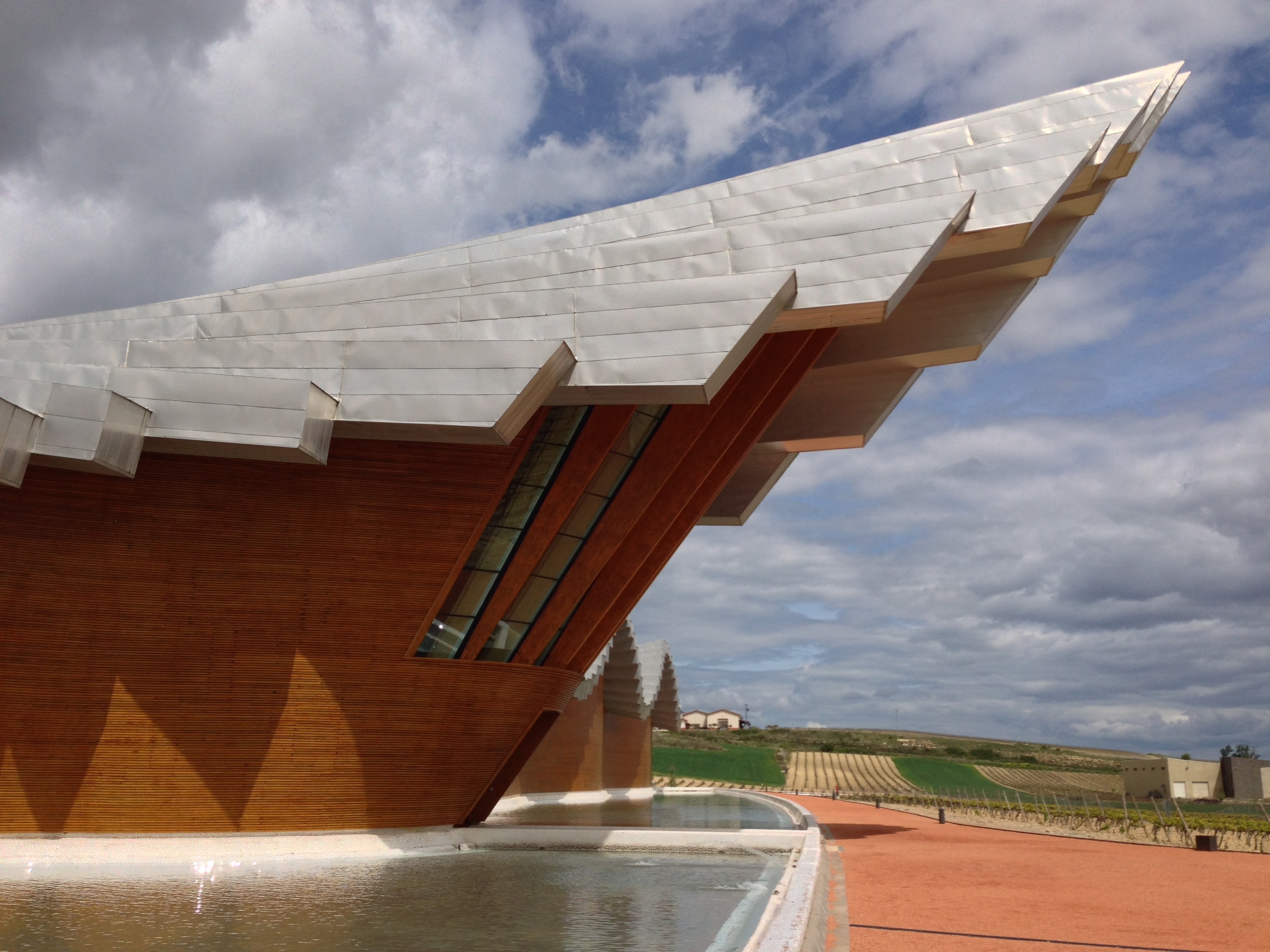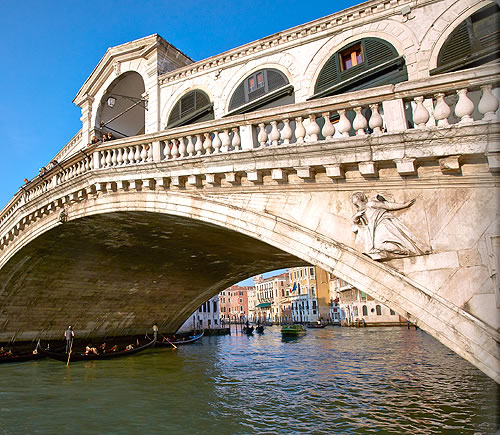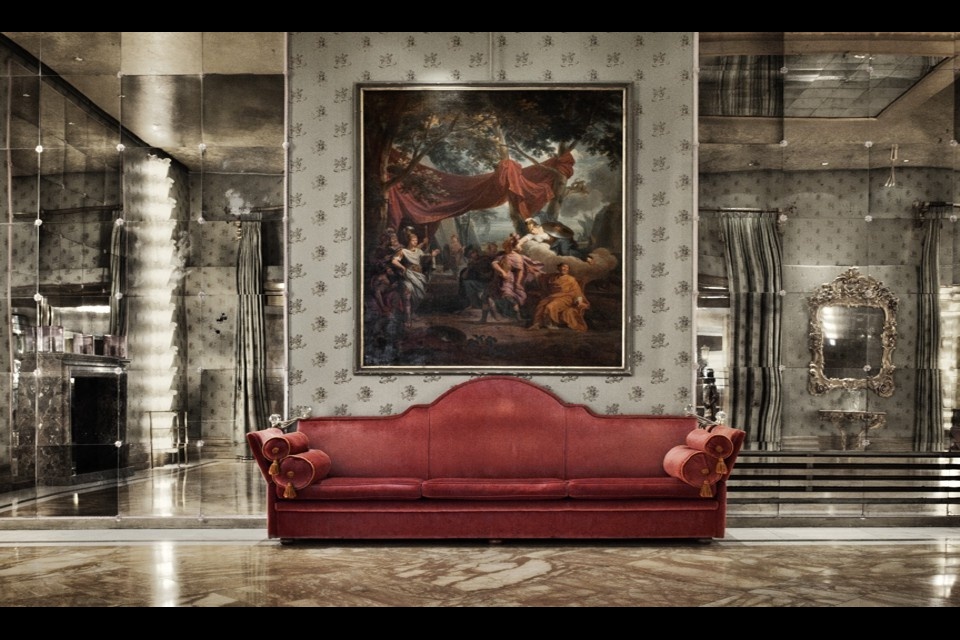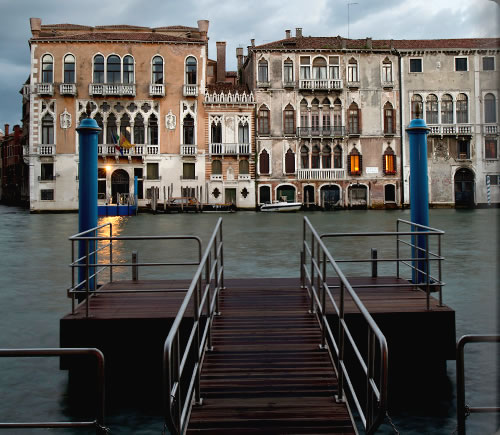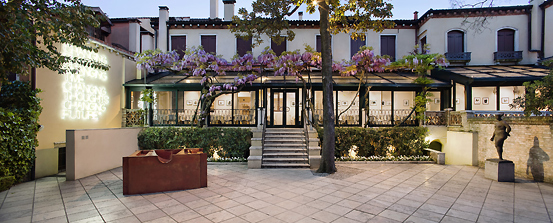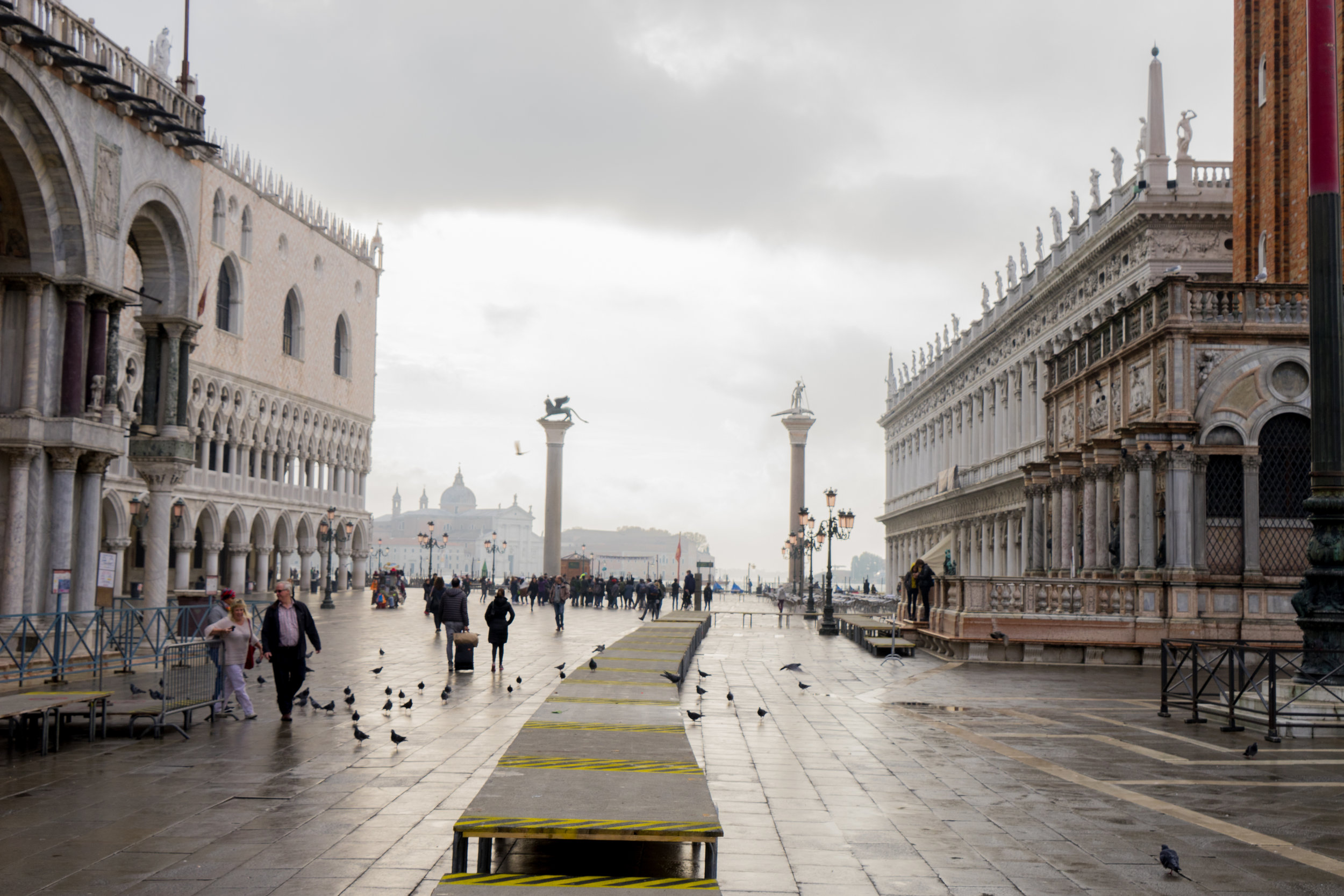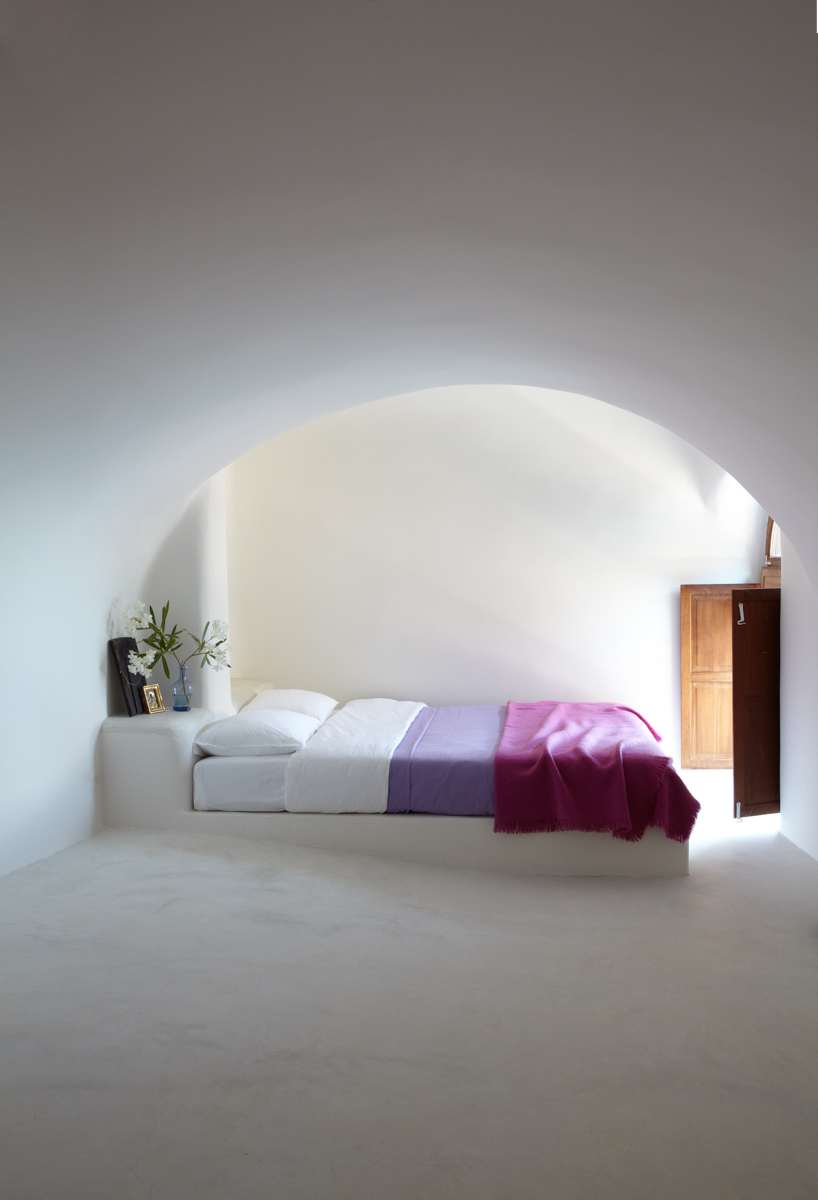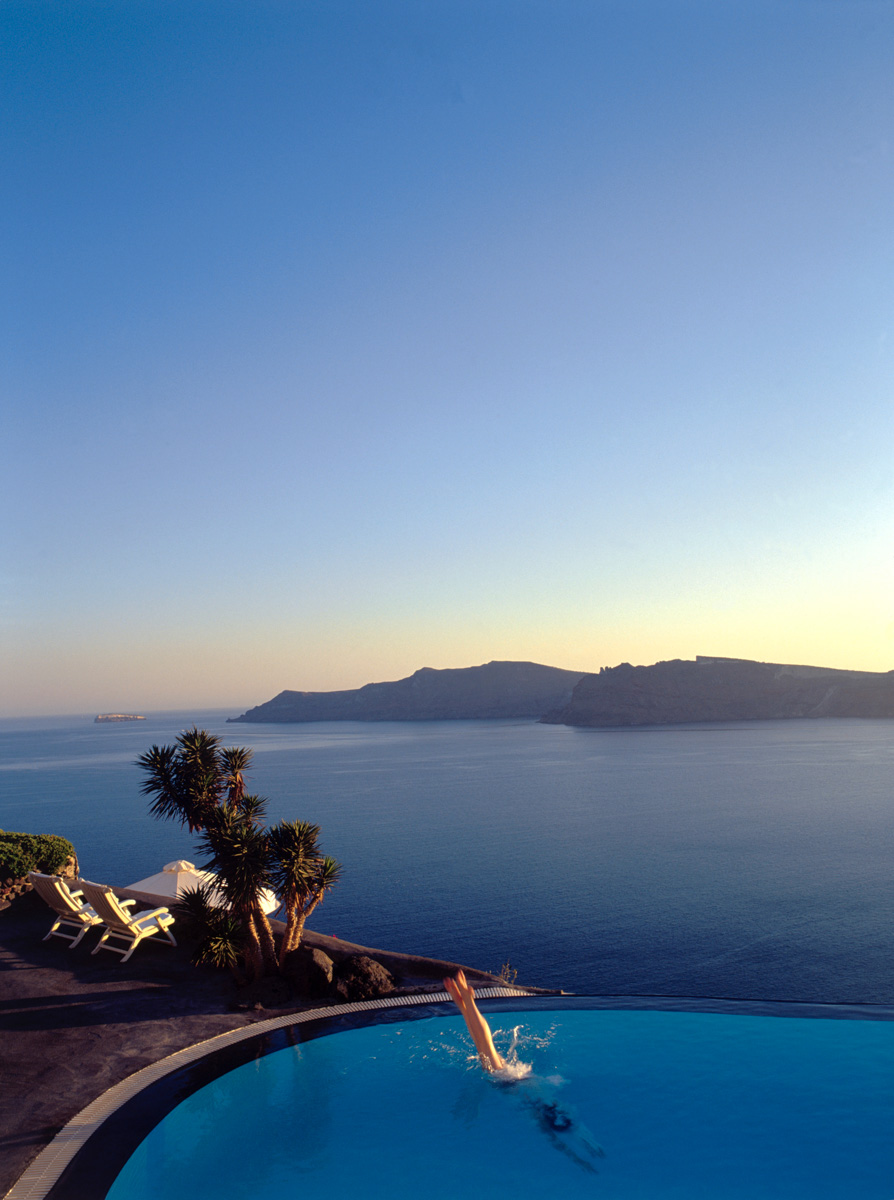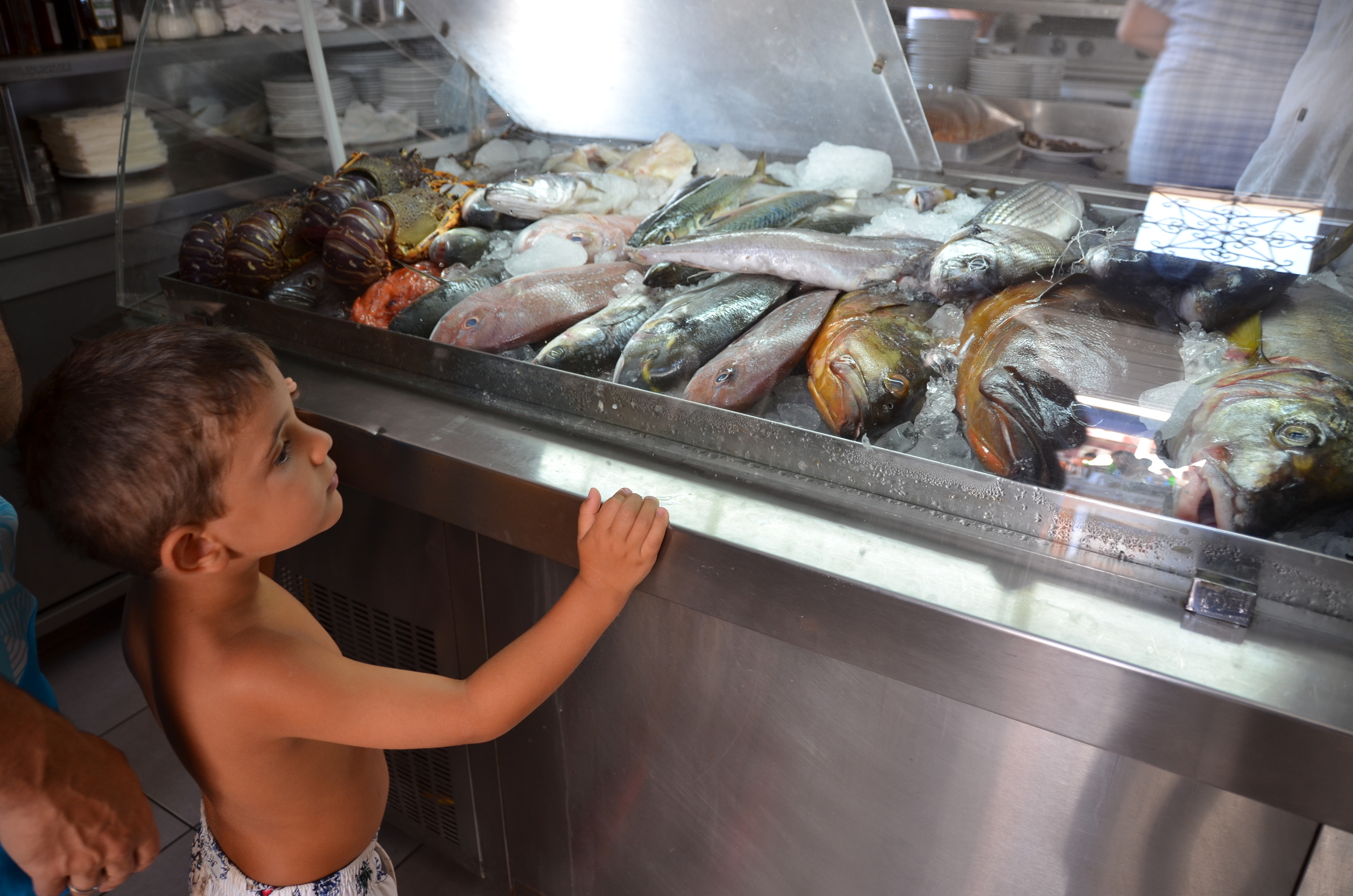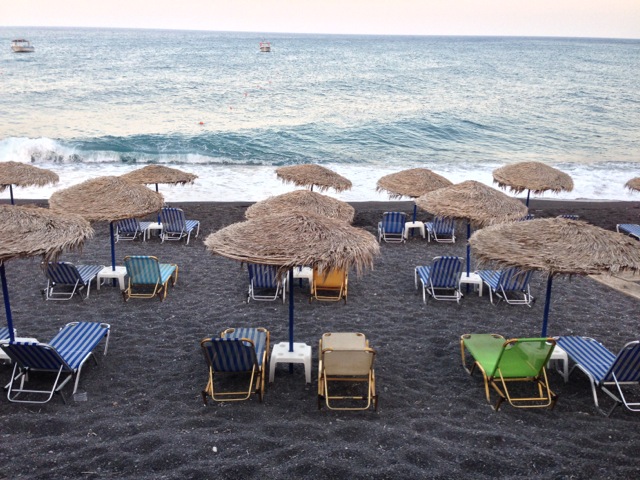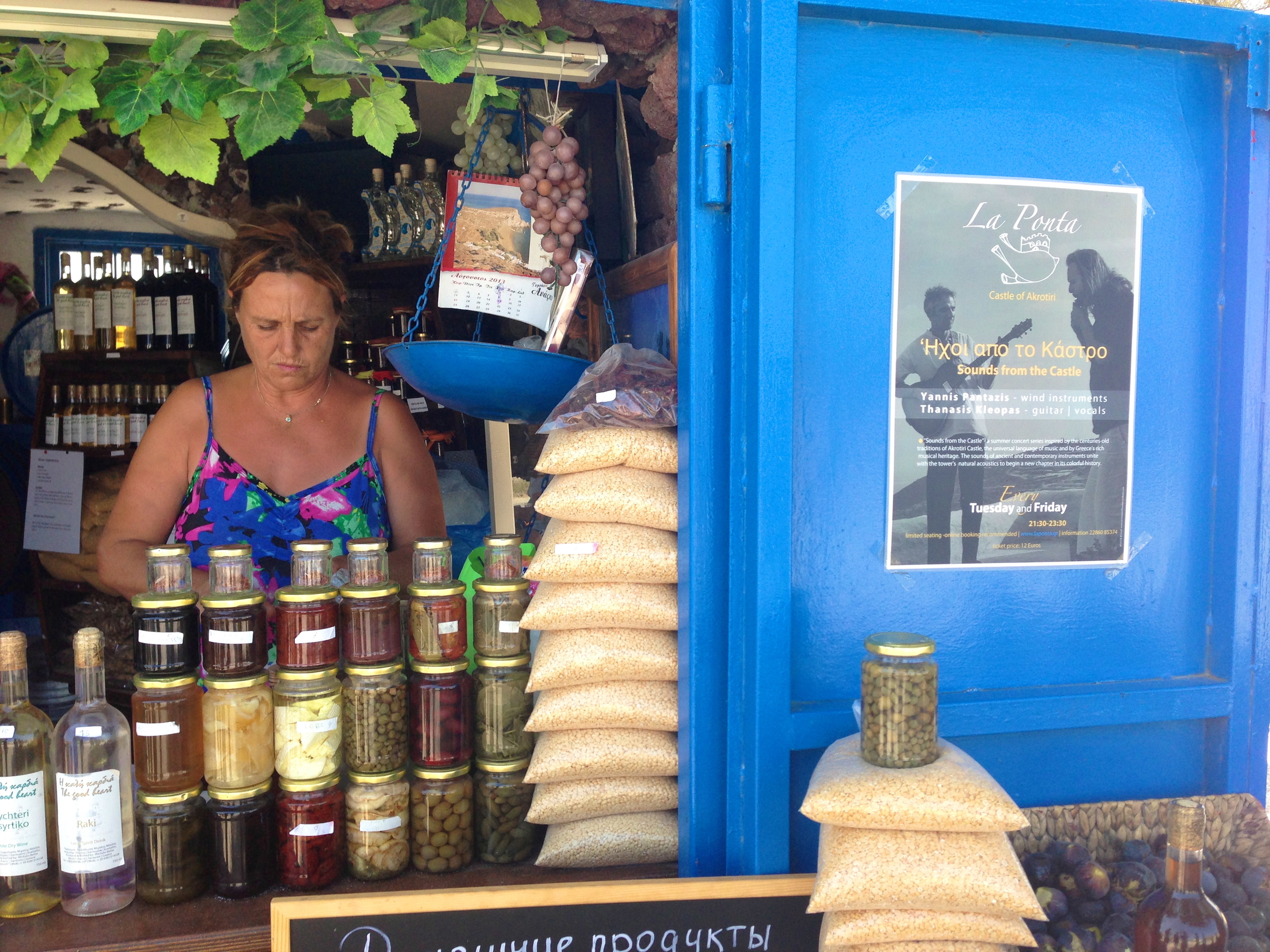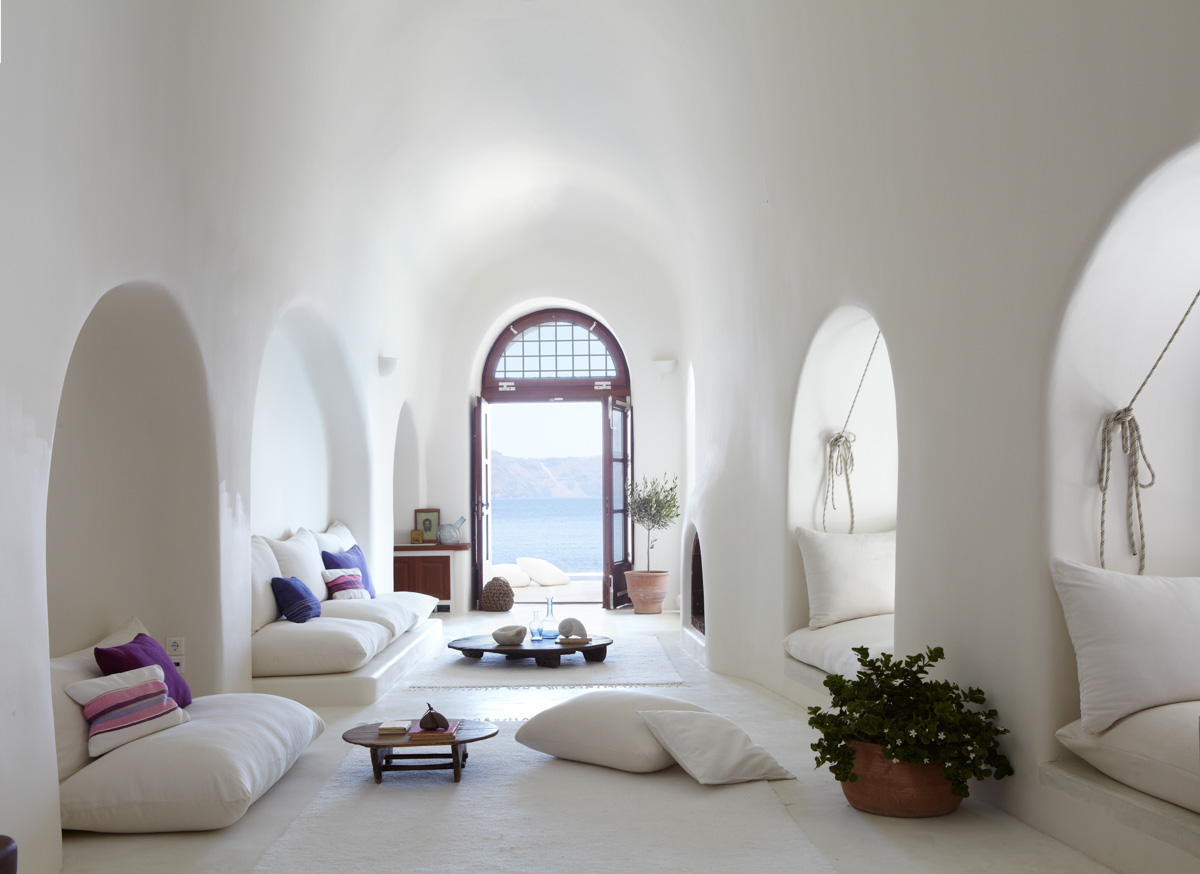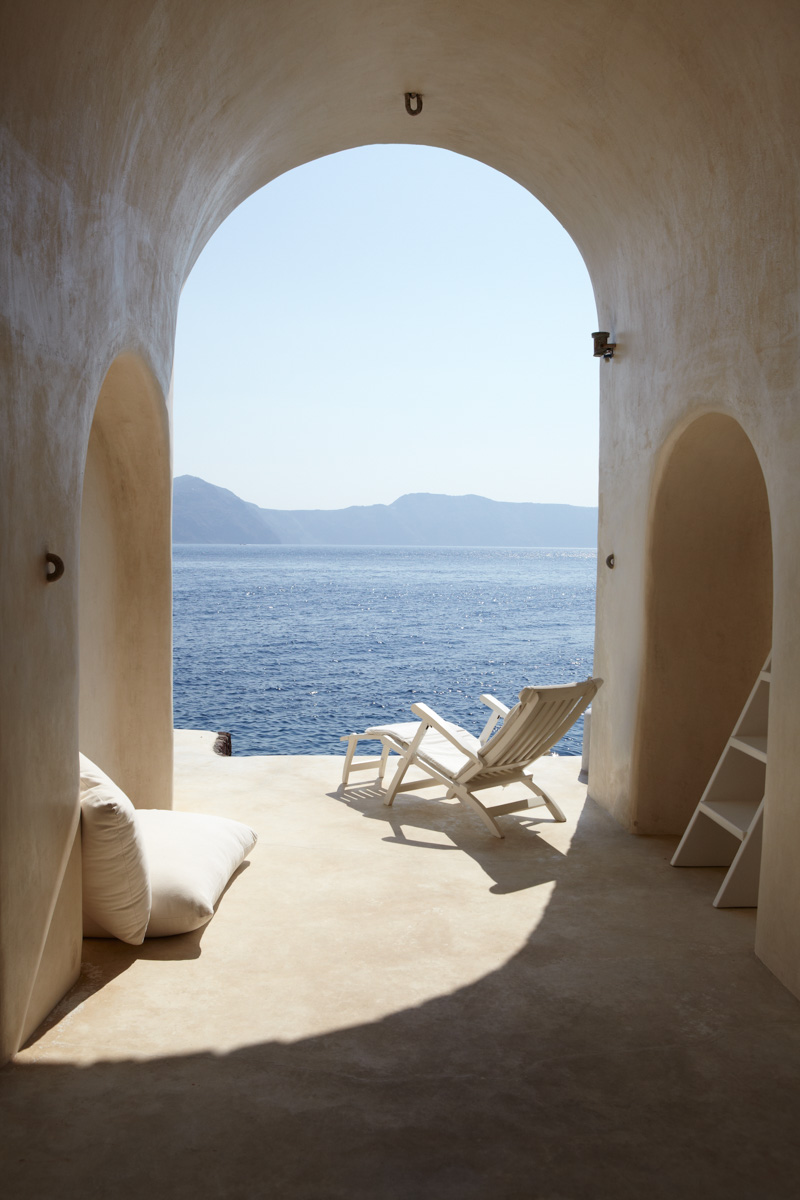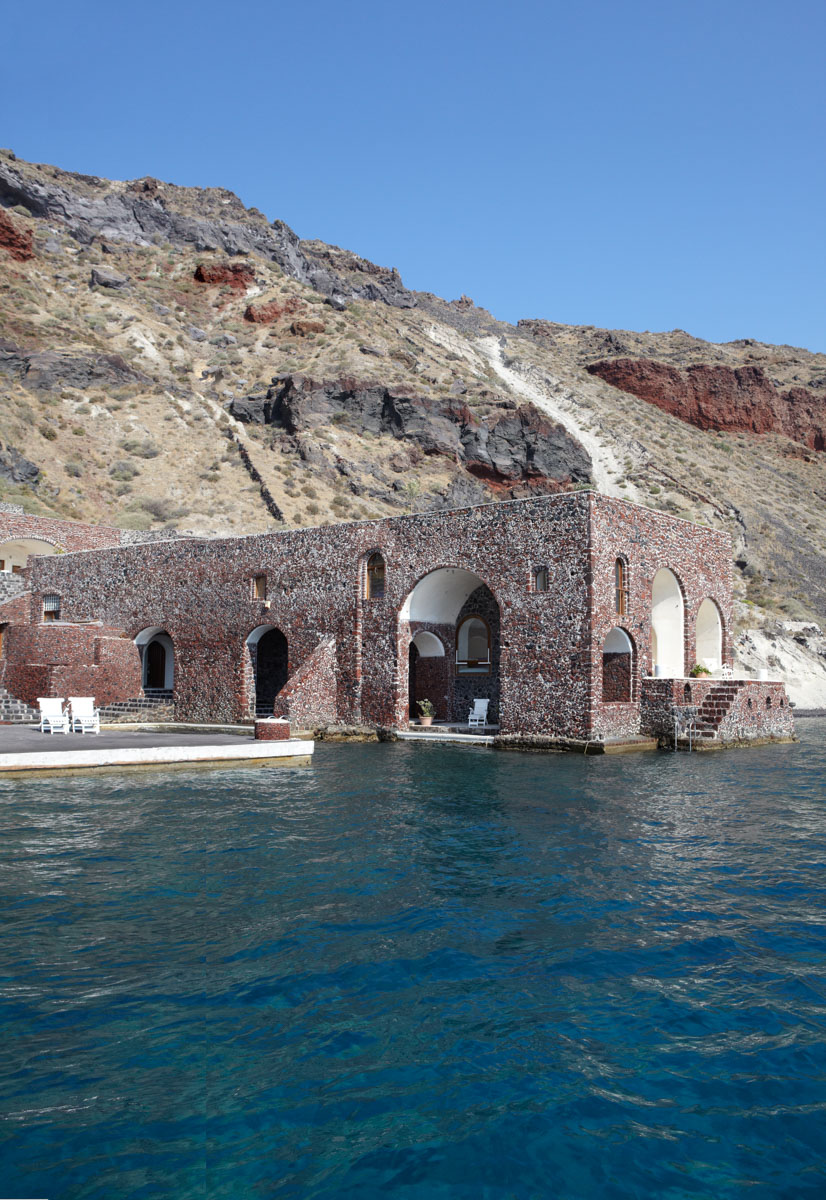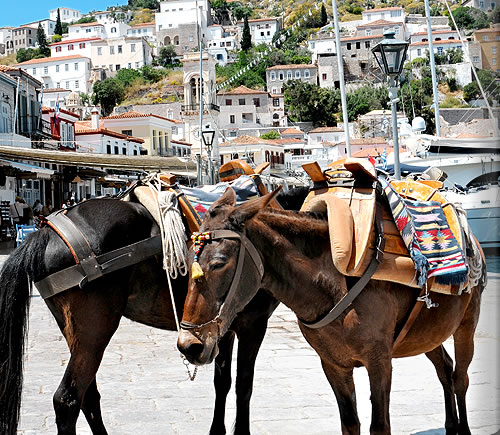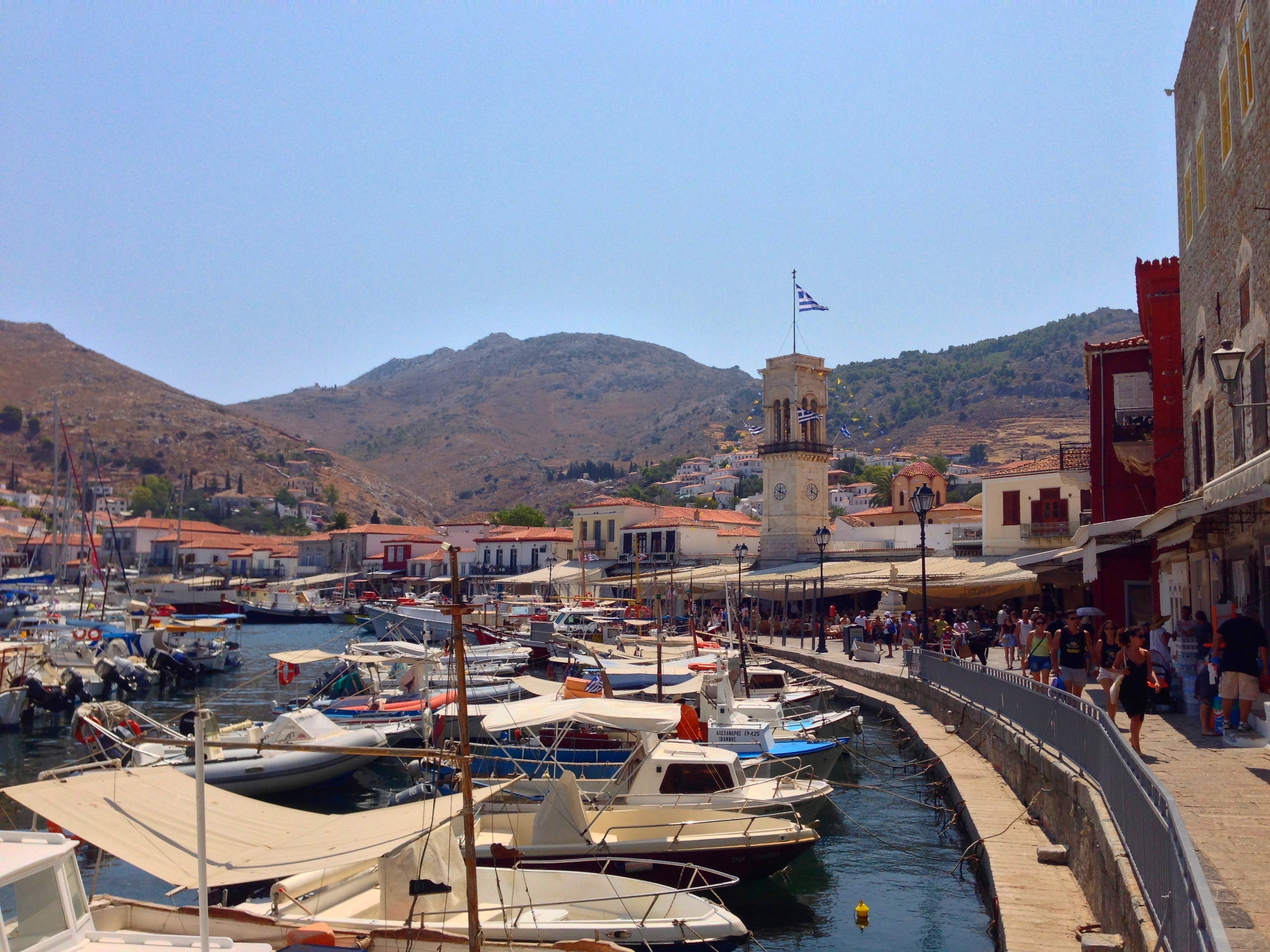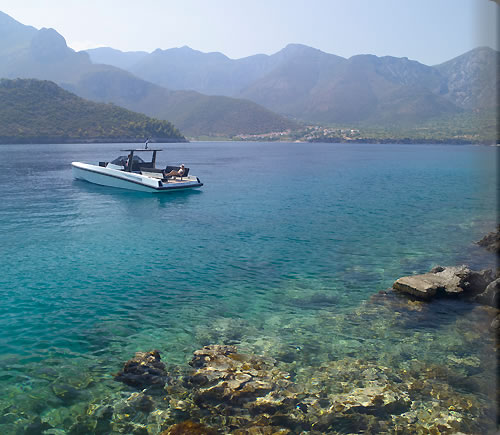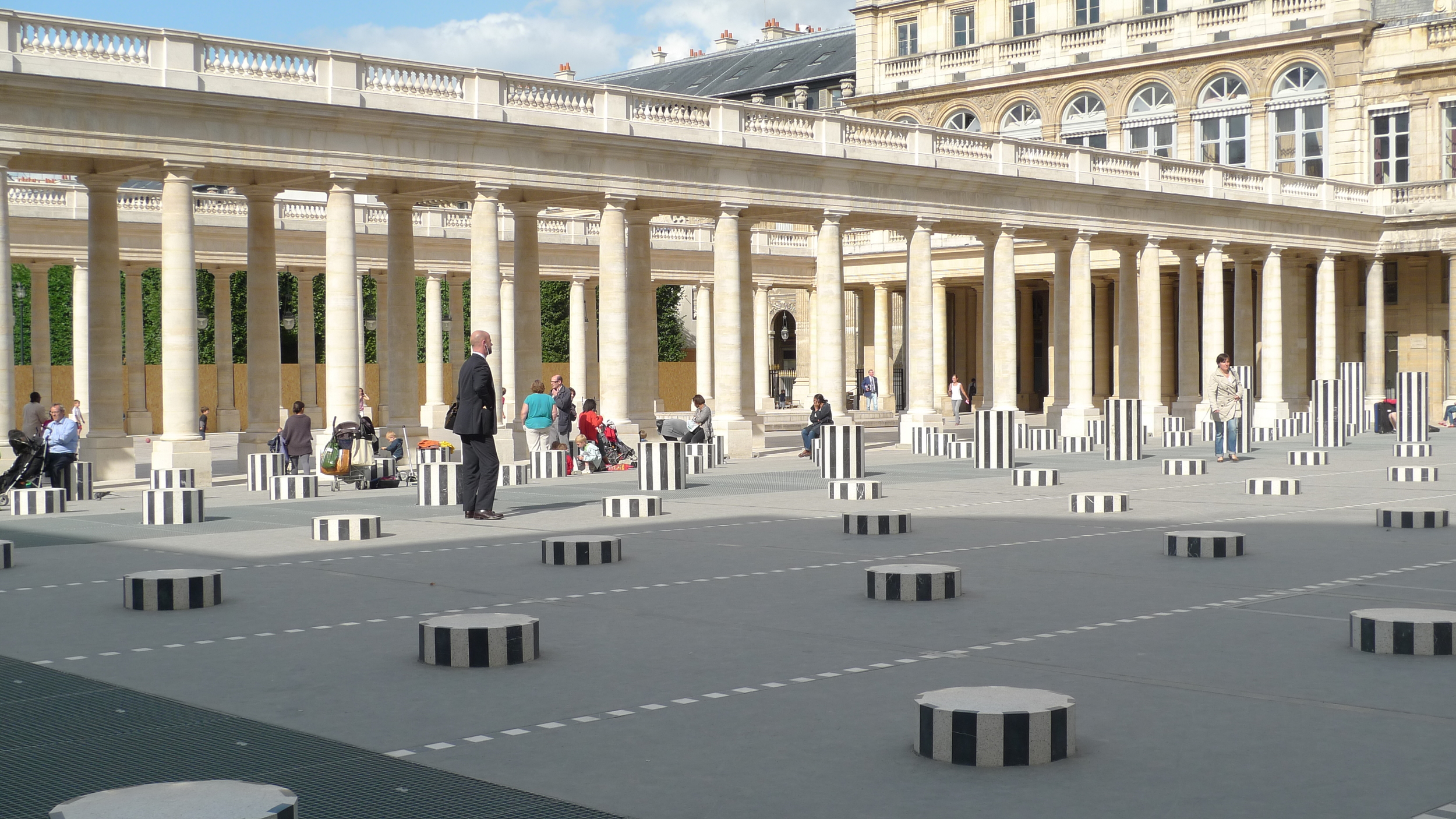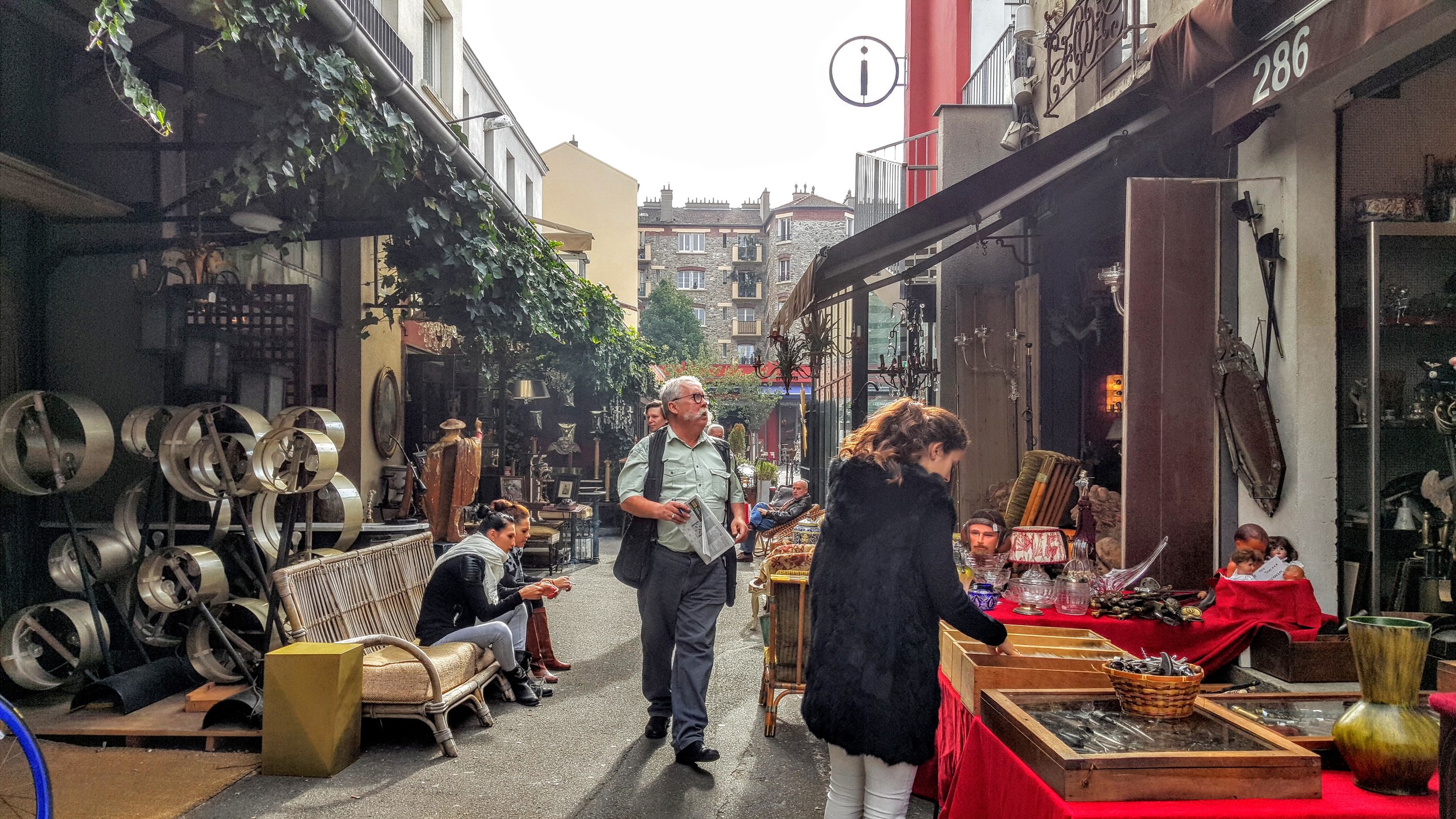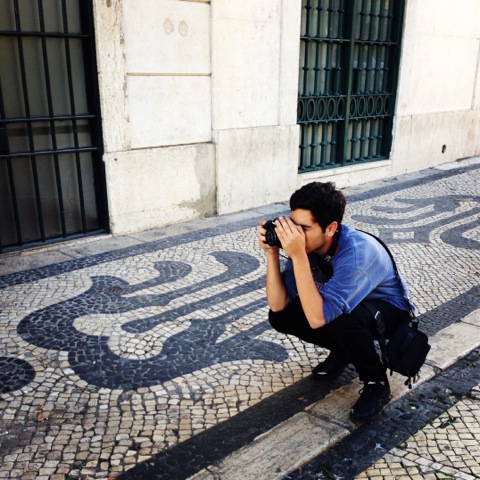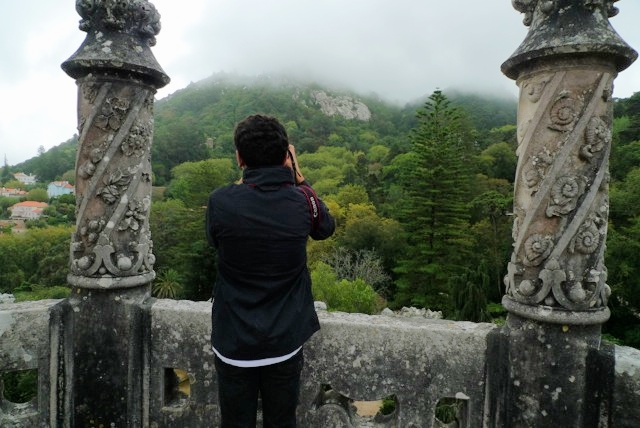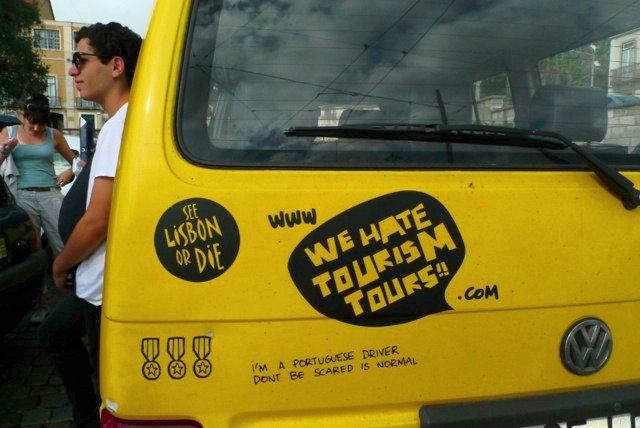Normandy: Beyond the Battlefields
Read MoreMADRID: INDIE STYLE
MADRID: INDIE STYLE
Read MoreMILAN'S MOMENT
MILAN'S MOMENT
Read MoreROME: SEEING THE SIGHTS
ROME: SEEING THE SIGHTS
Read MoreBella Rome: Michelangelo, Carraci and Pizza Bianca
Bella Rome: Michelangelo, Carraci and Pizza Bianca
Read MorePRAGUE: INDIE STYLE
PRAGUE: INDIE STYLE
Read MoreLONDON: WHERE TO GO NOW
LONDON: WHERE TO GO NOW
Read MoreBERLIN: INDIE STYLE
BERLIN: INDIE STYLE
Read MoreLondon: Local Take with Drive on the Left
London: Local Take with Drive on the Left
Read MoreDrink up--A Weekend in Rioja
Just a few hours drive from Madrid; Rioja is Spain’s most lauded wine region. Unlike Napa, or to a lesser extent Tuscany and Bordeaux, places more commercial and accustomed to tons of visitors, Rioja is delightfully undiscovered and authentic. Traveling from San Sebastian, (see here) with a stopover first for a lunch to end all lunches at Extebarri (see here), we made our way to our home base at the Marques de Riscal for the next two nights. Hardly enough time to soak in all the compelling wines, delicious food, modern architecture and medieval villages.
Tripper Tips:
Do your research and plan ahead to schedule appointments at the wineries you wish to visit. Most do not have public tasting rooms and only offer limited tours in English, usually one per day.
You have the option to choose to tour the Marques de Riscal winery, it’s included in your stay. The 33,000 square foot complex, including the hotel and spa, is aptly called the The City of Wine. Tours of the winery are 90 minutes.
Another hotel option is to stay at the boutique Hotel Viura, located in Villabuena de Alava, home to over 30 wineries.
Have time for another day tip… dine at the the famed El Portal del Echaurren in the town of Ezcaray for food from chef Francis Paniego. Chef Paniego is also the chef at the gourmet restaurant at Marques de Riscal.
Have more time…visit the mountain monasteries of Suso and Yuso. Be sure to make a reservation a few days before you plan on going.
Rioja is a vast area, and a useful source is to download the comprehensive Maribel Guides before you go.
Stay: Its not everyday you get to sleep in a Frank Gehry designed building that looks just like the younger sibling of the Guggenheim Bilbao (see itinerary here.) The Marques de Riscal sits high on a hill, overlooking the oldest winery in Rioja, dating from 1858. You can see the hotel miles before you arrive. It looks as if a space ship was dropped in the middle of tiny, sleepy Elcegio. Riscal has put Rioja on travelers’ maps, and indeed the crowds come—but they also leave quickly, and most of the time you have the place to yourself.
Singular: Frank Gehry brought international attention to Rioja, but he is not alone in creating breathtaking architecture, Santiago Calatrava, Zaha Hadid, and Inaki Aspiazu have all designed cutting edge wineries that stand out in the landscape of rolling hills and fortified towns. It’s so surreal, so fun.
Morning Wake Up: Wander through the streets of Elcegio, and then head up towards the vineyards, you can walk or run for miles. It’s peaceful, beautiful, and the return vistas of Riscal are magical, changing form and color from every angle. It feels like life in Elcegio hasn’t changed all that much, as if untouched, even with the arrival of Riscal. Afterwards, enjoy breakfast in the hotel’s modern bistro.
Drink: A large concentration of wineries can be found in or near Haro, approximately 30 minutes from the Hotel. We booked a morning tour at López de Heredia, where the Zaha Hadid decanter shaped tasting pavilion and wine shop stands in sharp contrast to the traditional winery next door. The tour begins in the winery, surrounded by men at work making wine barrels, one of the only wineries to handcraft their own barrels. You’ll learn the history of this family run bodega dating back to 1877, before venturing down to the underground tunnels and caves. Itchy at the sight of countless cobwebs, we were amazed at the thick layer of natural mold covering both the cellar walls and the wine bottles. I’ve visited a lot of wineries, and this was a unique and visual experience. Roda, right next door, has one of the rare public wine rooms. Stop in for a tasting, not only of their stellar wine, but also of their outstanding olive oil. Another popular winery in Haro is Muga if you’d like to do another tour.
Drive By: Make a stop at Ysios’ Winery, designed by Calatrava. We heard the building was more compelling than the wines, and it was well worth it to walk around and admire the architect’s handiwork.
Still Thirsty: If you’re up for more touring, one of the more interesting tours is at Bodegas Baigorri. The winery is an architectural gem, a glass box with a multi level winery below, designed by Iñaki Aspiazu. Here the wine rivals the setting; Baigorri was one of our favorite Riojian wines. You can choose to eat here; we heard the set 3-course lunch overlooking the vineyards was a lovely way to spend the afternoon.
Lunch: On the way to the afternoon stop in Laguardia, dine at the charming, small restaurant Hector Oribe in the nearby town of Paganos. The Michelin starred restaurant has quite a following for it’s creative take on traditional Riojian classics.
Don’t Miss: Book a tour in the late afternoon with Judith of Pepita Uva, to not just see, but to learn and experience the history of picturesque Laguardia, a fortified medieval town, near the Cantabria Mountains. Judith speaks perfect English, her mom is from Boston, and she lives here in her family’s home—offering you a true local’s insight and knowledge. The two-hour tour covers the historic town center, the church and the Abbot´s Tower. Laguardia is most fascinating for its network of over 300 subterranean wine cellars, all caves beneath people’s homes. These hidden caves, were once used for protection during sieges, now adapted for wine production and storage. Judith took us into her family’s own cave, deep underground. The tour ends at Judith’s shop with--you guessed it--a glass of wine.
Dinner: Close to Riscal, head to Fuenmayor, it doesn’t look like much from the road, but has a simple, sweet town center. Here we had one of our most delicious meals in all of Basque county at Asador Alameda. Run by husband and wife Esther and Tomas Alvarez everything is prepared simply using only the finest seasonal ingredients. The restaurant set up was a bit unusual as Tomas grills in an curtained, glass enclosed kitchen right in the dining room utilizing his 2 grills –one for huge slabs of t-bone steaks, and another for whole fish. He kept smiling at us as he cooked our dinner, his pride fully evident. Later touring the tiny, spotless kitchen we met Esther who proudly showed us what was bubbling on the stove. We left with hugs and a meal we’ll remember for a long time. After many memorable dinners over our ten-day trip, my best bite may have just come down to a simple bowl of baby peas.
Day Two
Morning: It’s not just a winery tour, but also your morning workout. Walk the vineyards at world renowned Remelluri. Using the maps provided, you choose the 30, 60 or 90-minute self-guided walk throughout their gorgeous grounds. Make sure to book ahead. Afterwards head to Briones to visit the Vivanco Museum of Wine Culture, the world’s largest wine museum. All 4,000 square metres are devoted to exploring the evolution of wine over 8,000 years of history.
Lunch: Wander around lovely Briones before heading to lunch at Los Calaos, a family run restaurant in the old part of town with a traditional Rioja menu.
Relax: Back at the hotel, book a massage at the lovely Caudalie Spa overlooking the vineyards, with a small indoor pool. You’re in wine country so try one of the wine related treatments such as a cabernet scrub.
Tapas Crawl: Some say Logrono, the capital of Rioja, rivals San Sebastian when it comes to pinchos. Simpler, and less haute, we found them equally delicious. All the action takes place clustered around two narrow streets in the Casco Viejo: Calle Laurel and Calle San Juan. Come hungry: it’s a bustling area with over 50 bars, a real food marathon. The evening crawl gets going around 9 pm, plan on visiting 5 or 6 bars, and sampling the specialty in each place. How will you know what to order? Ask the bartenders, look and see what the locals are ordering, or choose what looks good to you and be adventurous.
Eat: Bar Angel serves just one thing: garlicky wild mushrooms grilled and served on a toothpick atop a slice of bread, with a small shrimp as a garnish. It might sound boring, but trust me; it was so good we immediately ordered another round. Half the fun is wandering around and finding your own favorites: we liked El Sebas for their tortillas de patatas, Juan y Pinchame’s prawn and pineapple brochettes and Pata Negra for the toasted jamon sandwich or plates of their rich iberico.
Drink: Wash down your pinchos with the inexpensive Txaoli, the popular fizzy white wine or with a local red crianza. At Taberna de Correos for a few extra euros we ordered wines by the glass, sampling some higher end wines from the area. One we discovered, El Pundito, we are now buying and drinking at home.
Still Hungry: I’m betting you’ll be properly stuffed after a good pincho prowl , but if you want to sit down and eat dinner, Iruna and Matute, both on Calle de Laurel are good choices.
Related Destinations
A weekend in Venice
Venice, a floating city is one of the world’s most magical of places. A city of contradictions—sensual, romantic and architecturally significant while at the same time fragile, overcrowded and very expensive. One of the most unique places to visit, go and see the sights, but leave time to wander; getting lost is half the fun! Venice’s charms and treasures are too numerous to experience in just a weekend, so plan your time well and make the most of your day.
Tripper Tips:
Venice’s beautiful opera and concert house, Teatro La Fenice, reopened after a catastrophic fire in 1996 that destroyed it completely. Click here to see the schedule while you are here. The theater is usually open for daily tours, check ahead to be sure.
The tiny boutique of Cristina Linassi sells hand-embroidered nightgowns and sheets made in its own workshop. This is an ideal place to pick up something extra special as a present. They also have exquisite bed and table linens...with the prices to match.
Off the beaten track - visit Cemetery Island, Isola di San Michele, to see the tombs of Igor Stravinsky, Joseph Brodsky, Segei Diaghilev and Ezra Pound.
Venice has a great hot weather aperitif that you definitely want to try--the Sgroppino, which is Prosecco mixed with vodka and topped with a small scoop of lemon sorbet.
Before dinner head to a Bacaro, stand up snack bars resembling Spain's famous tapas bars. Cicchetti are little snacks, good for a bite before dinner with a glass of wine. Cantina do Mori and Bancogiro. both are good places to try near the Rialto Market.
Near St. Lucia train station visit the very old neighborhood of Campo del Ghetto, the world's oldest Jewish ghetto. Still an active community to Venice small Jewish population (approximately 500) with two synagogues still in use today. The Museo Ebraico offers guided tours every hour starting at 10:30.
Stay: The Bauer Il Palazzo, housed in an 18th century palace, overlooks the Grand Canal and is close to St. Mark’s Square. Two boutique hotels, both on the Grand Canal, include Ca Maria Adele and Ca’Sagrado. Feeling extravagant, there’s nothing better than the new Aman, a grand, historic, 24 room hotel housed in a renovated 16th century palazzo right on the Grand Canal. The legendary Gritti Palace just reopened after an extensive renovation. For those who want a more resort like feel, stay on the island of Giudecca. Belmond’s Hotel Cipriani or Bauer’s Palladio Hotel and Spa are a 10-minute boat ride from St. Marks.
Breakfast: Start the day at Café Florian on St. Mark’s. Dating back to 1720, this Neo-Baroque café is beautiful, sit outside and watch the crowds go by.
Morning Sights: For first time visitors, or those who can’t remember the last time they were in Venice, Piazza San Marco, or as the English say St. Marks’s Square is a must do. It’s sure to be filled with tourists so go early. Ride the elevator to the top of the Campanile for a great view of Venice from up high. Go inside St. Mark’s Basilica, the most famous of Venice’s churches and one of the best examples of Byzantine architecture. Book the Secret Itineraries tour in advance for the Doges Palace, and walk right past the long line with your guide. Inside you’ll see two very different sides of the building—first the magnificent rooms with walls of Venetian masterpieces, and then the hidden secret prisons and torture chambers behind those walls. All of these sights are within a few hundred yards—you can cover a lot of ground quickly! Set off in directions off the square and wander, you will discover a much quieter city.
Shop: Il Prato at San Marco has a great selection of Venetian handicrafts all handmade...from antique fabrics to leather goods, fine papers to old carnival masks.
History Buffs: Visit the Correr Museum at St. Mark’s Square dedicated to the art, culture and history of Venice.
Lunch: Ristorante Quadri on San Marco serves delicious contemporary Italian. Near the Rialto Bridge dine at popular Antiche Carampane. Make sure to order the order the pasta with spider crab and fritto misto. Or head to Ai Gondolieri in the bustling Dorsoduro neighborhood.
Art Afternoon: Venice is an exciting place for modern and contemporary art even when the Biennale is not in season. Many museum quality collections can be seen at extraordinary palazzos throughout the city. One of Venice’s most popular attractions is the Peggy Guggenheim Collection. During her life Peggy Guggenheim was a pioneer of many artists, giving many their first shows. This is a personal, intimate museum in what was once her former waterfront home in the Dorsoduro neighborhood. Francois Pinault is one of the most influential art collectors in the world today. In 2009 he opened his second venue of contemporary art, Punta della Dogana, located at the tip of the Dorsoduro. It hosts temporary exhibitions, mostly with works belonging to the François Pinault Collection. (Pinault’s first venue, Palazzo Grassi, a palace built on the Grand Canal in the 18th century is also worth a visit!)
Old World Art: Not into contemporary art… head to the Gallerie dell'Accademia to see 5 centuries of classic Venetian painting.
Time Travel: The Palazzo Rezzonico is also in Dorsoduro. The interior offers you the truest sense of life in 18th century Venice.
Apertif: Fans of Hemingway must have an Aperol spritzer at Bar Longhi. Located at the Gritti Palace this was one of his favorite haunts; sit on the terrace overlooking the canal. Another favorite Hemingway haunt, Harry's Bar has been a fixture of Venice since 1931. It's on most everyone's list to visit, asthe birthplace of the Bellini, a mixture of white peach juice and proseco, invented by Giuseppe Cipriani and named after a painting by 15th century artist Giovanni Bellini.
Late Night: Venice is not a late night city, but Centrale is an exception if you're looking for a night cap. Just steps from St. Mark's the hip, stylish interior contrasts with the historic, 16th century building it calls home, a winning combination.
Dinner: Off the beaten track is Vini da Arturo. However, this under the radar restaurant is worth finding! Arturo's dishes never disappoint. Don't miss the Venetian pork with vinegar or the radicchio pasta. Arturo's only seats 22, so book ahead. Enjoy one of best meals in Venice at Da Fiore, this Michelin starred restaurant is tops for fresh local fish and seafood. Al Covo uses only the freshest ingredients to showcase the traditional Venetian cuisine from Chef Cesare Benelli. A friend recently loved her meal at Hostaria Da Franz.
Day Two
Early Market: Foodies can’t miss a visit to the Rialto Market to see the freshest fish and vegetables.
Islands: Spend a half-day touring the neighboring islands of Murano, Burano and Torcello. Watch the glassblowers at work and visit the workshops along Fondamenta dei Vetrai. Bring your camera to snap great shots of the rainbow rows of houses in Burano. Stop at the Burano Lace Museum, located at the historic palace of Podestà of Torcello, in Piazza Galuppi, which was the seat of the famous Burano Lace School for 100 years up to 1970. Here you will find rare and precious pieces showcasing the history and artistry of the Venetian and lagoon’s laces.In Torcello, visit Santa Maria dell Assunta, Venice’s first Cathedral.
Lunch: Some say it’s worth going to Murano just to have lunch at Ai Frati or at Osteria al Ponte del Diavolo in Torcello.
Sweet Tooth: Choose between two of the best gelaterias in Venice at Nico or Gelateria Alaska.
Peaceful: Escape the crowds and take a late afternoon launch to Giudecca Island, a small island in the lagoon just across from the Grand Canal. Once home to Jewish merchants in the 12th and 13th century, though never a ghetto as the name implies. This is a lovely neighborhood for a stroll along the waterfront with lovely views of the Grand Canal and city. Walk around the narrow streets and admire the old houses and churches.
Dinner: Dine at Cip’s Club in Giudecca for a romantic dinner with an incredible view. Or head back and go to casual Aqua Pazzo for delicious Neapolitan pizzas, great fish and must order sorbets. Arrive by gondola or foot to tiny, cozy Da Ivo on the canal not far from St. Mark's. Order the Florentine Beef and be sure to check the daily specials.
Related Destinations
Santorini: A Weekend In Oia
Photograph by William Abranowitcz
From the moment she saw the view of the caldera, my teenage daughter gasped that unlike other places she had been, Santorini lived up, and exceeded, all the glorious pictures and postcards that had mingled in her imagination. Born from a cataclysmic volcanic eruption, Santorini, the southernmost island of the Cyclades group, thrills with dramatic cliffs rising up from the sea and white villages perched high above the caldera. Oia at its most northwest tip is famous for its awe-inspiring sunsets, breathtaking views and incredible hotels and restaurants hugging the cliffs.
Tripper Tips:
Oia’s charms attracts busloads of visitors, it gets crowded in the summer—real crowded! May and June are the best time to visit.
Try Santorini’s own micro brews--the Yellow, Red or Crazy Donkey or the local Fix beer.
Domaine Sigalas Winery, right down the road from Perivolas, is open to the public for tours or to visit their tasting rooms. The wines, especially the whites, have been gaining an international recognition and are truly delicious. It’s nice to visit in the early evening as the sun sets over the vineyards.
Want to continue eating healthy Greek food at home? Recreate the magic of your trip with the help of some of our favorite Greek cookbooks—Smashing Plates, How to Roast a Lamb, Food from many Greek Kitchens, and Kokkari from San Francisco’s acclaimed restaurant.
Stay: While there are many beautiful places to stay in Oia, there is only one Perivolas. Started by the Psychos family with a dream and a vision, and just that much of crazy, all the rooms are built dramatically into the Cliffside in restored 300-year-old caves. The hotel is set high above the Aegean with rooms spread out amphitheatrically. The décor is simple, letting the scenery steal the show. All white interiors are accented with just a touch of pink, of purple, adding to the overall effect. And it only gets better with one of the most photographed infinity pools in the world, drop dead vistas over the caldera and neighboring islands and an incredible spot for sunset.
Location: Perivolas is on the outskirts of Oia, which is a good thing. It’s just a short walk (5-10 min. max), but it’s nice to be slightly outside of the main thoroughfare. I used, and highly recommend, Ronnie Liadis from Liadis Travel to organize our trip. Ronnie, recognized by Conde Nast Traveler as a specialist for Greece, has in-depth knowledge of the country and all things Greek. Ronnie also recommends Canaves in Oia, especially if you are traveling with children.
Breakfast: Perivolas’ dining room, for guests only, is built in a converted wine cellar overlooking the pool. Breakfast is buffet style with made to order eggs. At lunch, or as a late afternoon snack, you must try the traditional Santorini dish of favas, done here beautifully with capers and tomatoes on top. (Santorini is famous for its favas, which are yellow split peas, not the green favas from broad beans.) The Dakos is another must order—a Cretan style salad of tomatoes, capers, cheese and olives over a dark rusk.
Get Rolling: Head through town and run the steep steps down to Amoudi and back up, if that’s not enough of a work out do it more than once. For the ambitious there’s a hike from Oia to Fira that we had the best intentions of doing. The entire hike takes about 4 hours and is meant to be spectacular.
On the Water: Greece is heaven out on the water with some of the most inviting swimming anywhere. Rent a catamaran for either a half or whole day, leaving from the small port at Amoudi. While the view looking down is pretty impressive, the view looking up at the white washed villages is equally as good. You can cruise around the Caldera and over to Thirasia, or head to Ios or Anafi Island to swim in coves and enjoy the white sandy beaches. A BBQ lunch was served on board. Time it to be out on the water for the most beautiful sunset. A highlight of our trip!
Shop: During late morning when the cruise ship buses arrive en masse, and at sunset when the crowds aim to get their strategic spot, Oia is to be avoided –its really wall-to-wall people in the narrow, windy streets. Go early or late afternoon to have the town to yourself, or even after sunset when the crowds disperse. (The shops stay open late.) Atlantis Books is one of those special places, a small bookstore teeming with character. Started by expats from England and America, and reminiscent of Shakespeare and Co in Paris, there are books stacked everywhere. Go in and linger. Have fun exploring the maze like streets, finding your own favorite shops among the mix of chic boutiques and souvenir stores. There are many nice jewelry stores, some high end and some selling tons of inexpensive evil eye bracelets, which are good for gifts. Don’t miss Maria Baba Vida. Maria, a French ex-pat, has created a boutique with an eclectic array of jewelry and textiles from not only Greece, but also France and Asia. I left with 2 unique pairs of earrings and many stories from Maria.
Eat: Two of the most acclaimed restaurants in Oia are 1800 and Ambrosia, both with stunning views. If you can bear to leave Perivolas go for an early dinner and catch the sunset. Make a meal of mezes at Skala, a laid back restaurant with views not just of the water, but of the donkeys traveling up from the quay below. The Red Bicycle is more casual, a quirky, charming restaurant with good food. Down in Amoudi, some people favor Dimitris and some prefer Katina, you can’t go wrong with either for freshly caught fish and seafood. Katina, look for the orange chairs, was one of my favorite meals in Santorini and I’m still dreaming of their tomato fritters.
Day Two
Discover: It’s well worth it to drive to the other side of the island to spend some time at Ancient Akrotiri, the Greek version of Pompeii. The entire site is enclosed and it’s fascinating to see the ancient city preserved after it was buried under volcanic ash during the Minoan period. Right nearby, take a look at Santorini’s famous Red Beach. You can choose to climb down and spend the day or just look at it from up high as we did. Next, drive to the lighthouse for spectacular views over the Caldera. Make sure to stop at the roadside stand right before you arrive to sample some of the local olives, cheeses, and the sun dried tomatoes, which are drying right in front on a rack in the sun. Don’t leave without some of the dried oregano branches, so much more fragrant than those you get at home. I only wished it was possible to bring back the jars of wild carpers and olives.
Afternoon at the Beach: Perissa and Perivolas are Santorini’s well-known black beaches on the eastern end of the island. They are fun to see, but I prefer the white sandy beaches of other Greek islands. Pick a spot for lunch and rent some sunbeds for the afternoon. You can rent jet skis or go windsurfing. The best beaches closer to Oia are Koloumbos and Baxedes and the winds determine which beach to go to on any given day.
Dinner: It’s crowded and it’s touristy, but if it’s your first time in Santorini you probably want to check out its main town of Fira. (Also spelled Thira) Overlooking the caldera, dine at Archipelagos or Naoussa for exquisite views, especially at sunset. One of the best restaurants on the island located in the hillside village of Pyrgos is Metaxy Mas; make sure to make your reservation well in advance.
Must do: A friend, who has spent over 20 summers on Santorini told me this before I left: At the port of Ammoudi follow the path past all the tavernas (away from the parking area) and continue along the gravel around several bends--you'll come to a place with several old little fishing boats. Off shore is a little tiny island. The place will be filled with Italians who, for some reason, like to lie on the rocks and sun bathe. It might be crowded but this will be worth it. On the little island at the far side is a tiny church up around 20-25 feet off the water. From the platform at the church, people jump into the sea. You MUST all do this lest we will never consider you ever having had a true Greek experience. Some people do intense flips into the water, but I just go simple. It’s exhilarating and the kids will love it. The water here is crystal clear and it's an ultimate Santorini experience.
Off the Beaten Path: Head to sleepy Megalochori. It feels more like old Greece than anywhere else in Santorini. Here there are little crowds and tourists, just a cute traditional Greek square. Wander the narrow streets, admiring the stone houses and the beautiful church. Have lunch on the square at Raki and definitely order the chicken kebabs. Even better come late afternoon so you can have dinner at Feggera, closed at lunchtime. Gavalas Winery, a classic old school winery is right at the entrance to town, arrange a visit before hand to taste their delicious wines.
Night Cinema: Meander the beachfront of Kamari, browsing in the shops before heading to an early dinner at Irini’s or Nichteri . Then proceed to the open-air cinema a 5-minute drive from town. (All the movies are in English) Though we weren’t fans of the movie playing that night, World War Z, I still remember sitting underneath the stars, drinking a Red Donkey and watching Brad Pitt.
The Hideaway
Extravagant: Rent out the Perivolas Hideaway carved into the foot of a cliff on the island of Therasia, a 5 minute ride from Oia. More than just a luxury villa, it’s got the feel of a private island as its set in its own secluded cove, accessible only by boat. The décor is simple, but stunning with terraces overlooking the sea and Santorini. Saying it is extraordinary and jaw dropping is no exaggeration. The Hideaway comes with a private boat, sea kayaks, waterskies, wake boards and windsurfing equipment.
**Photographs for Day 1 and The Hideaway by William Abranowicz
Related Destinations
Greece: Aman Style
Aman means peace in Sanskirt and Zoe means life in Greek--peaceful life--how apt a name to describe this zen like sanctuary. Opened in 2012, Aman’s sleek luxury resort is surrounded by olive groves overlooking the Eastern Peloponnese island of Spetses. Similar to New Yorkers exodus to the Hamptons, this is where the well to do have homes to escape Athens for the weekend. It’s mainland Greece, a place many don’t know to visit, perfect if you want to explore a different part of the country or as a stop before or after island hopping.
Tripper Tips:
Read Daniel Klein’s Travels with Epicurus, a lovely book about aging gracefully, set on Hydra. Archaeological buffs have more to explore! Other important sites include the legendary Citadel of Mycenae, the Cemetery of Dendra, The Temple of Hera, and Monemvasia’s preserved medieval churches.Logistics: Amanzoe is approximately a 2½-hour drive from Athens or a 2-hour journey by hydrofoil from the Athenian port of Piraeus. You can splurge and charter a helicopter – a flight of just 25 minutes from Athens Airport and land on Aman’s own helipad outside the front gates.
Setting: Walk in to a modern riff on ancient Greece with stunning architecture designed by Ed Tuttle. The spacious reflecting pool leads to a huge terrace overlooking the olive groves and the distant ocean, perfect for a late day cocktail at sunset. The design is clean, sparse, and all white and creams with tons of marble and stone.
Rooms: More than a room, each suite is a stand-alone pavilion set in its own courtyard with a private plunge pool looking out towards the sea. It is one of the nicest rooms I’ve ever stayed in. Everything is thoughtfully designed with local materials, this is not Aman, who are typically located in Asia, recreating their stunning signature Asian design in Greece, but instead creating an authentic Greek feel and style.
Relax: Incase you’re not feeling relaxed enough, the spa offers amazing treatments using natural products from the local olive groves.
Food: Everything is fresh and locally sourced. The Amanzoe’s menu lists local producers by name. The honey is from local bees, nearby farms supply the produce, and the olive oil comes from the trees on the property. Overall the food was delicious, simple and healthy.
Sun and Sand: At the main complex there is a beautiful pool, but most people tend to base themselves at the private beach club, a 8-10 minute drive by shuttle van from the hotel. (For the fit, you can use Amans mountain bikes to get there as well.) With two 25-metre lap pools and another smaller kids pool, it's very easy to spend the entire day there, doing nothing more than relaxing on loungers in the sun or beneath shady pergolas. There is also a full restaurant and bar open throughout the day. While it was a slight annoyance to shuttle to the beach, once there the set up is first rate. And back at the main complex the views from up high justify the distance to the beach.
Landscape: Reminiscent of Tuscany, it’s very hilly and dry, with the ocean off in the distance. The property is new and will get more lush each year as the olive trees mature.
Must do: The Peloponnese is most beautiful out on the water. Rent the Wally One, Aman’s luxury speedboat, for the day to visit the neighboring islands of Hydra and Spetses and swim in secluded coves. The Wally One was extremely comfortable for our family of four. Its not inexpensive, but well worth it. Hydra approximately a 25 min boat ride from Amanzoe, is a dream. There are no cars on the island, making it a lovely place to wander and explore. Have a drink or a bite in one of the seaside cafes overlooking the gorgeous harbor. Hydra has no real beaches, so people swim off the rocks. A good spot up from the harbor is the Sunset restaurant; you can have a drink while watching the swimmers below. Soak in the scenery--this is picture postcard Greece. Larger Spetses has its own charms and beautiful beaches. Take a horse drawn carriage to view the lovely Venetian and neoclassical mansions. There are nice shops and many places to eat, Amanzoe can give you their recommendations or pack you a picnic lunch if you prefer.
Day trip: The historic town of Nafplio is approximately one hour by car. It is one of the original capitals of Greece and a charming town in which to spend the day. Visit the historic Palamidi Castle, wander the streets, and dine at one of the seaside taverns. On the way back, stop at the old amphitheater of Epidaurus, a Unesco World Heritage site and one of the most important archaeological sites in Greece.
Drink: The quality of the Greek wines were a big surprise, we really enjoyed both the reds and the whites. Near Amanzoe there are numerous vineyards open for wine tastings. The hotel can arrange tours and tastings if you’re interested.
Late Night: Spetses has many restaurants, bars and clubs where people party till the early morning, the water taxi from Porto Heli to Spetses takes 10 minutes and runs all night.
Related Destinations
PARIS: AN ENDLESS ROMANCE
To extraordinarily talented and successful interior designer Julie Hillman when it comes to Paris-- once is never enough. Paris draws her back time and time again, for work and for pleasure, and while she’s always on the lookout for new and fascinating treasurers, the historic landmarks never grow old. Long strolls, market hopping, the art, the food, the old and the new….whether the Left Bank or the Right Bank, it’s an endless romance.
Tripper Tips:
Stay at Hotel L’ Abbaye - just moments from Musée du Luxembourg and Notre-Dame, this boutique hotel is charming and a quiet respite from the bustle of the Parisian city. Newly opened, La Reserve, is convenient near rue du Faubourg Saint-Honoré.
Take a break from your hectic itinerary at the beautiful Luxembourg Gardens and Palais Royal--the perfect stroll.
The Louis Vuitton Foundation , designed by Frank Gehry, and sponsored by LVMH, is a spectacular architectural accomplishment, museum and cultural center.
Transportation: I can often be found exploring Paris on a Velib - Paris’ public bike system. With pick-up and drop-off stations every few blocks, there is no better way to take in all that Paris has to offer. It’s efficient, affordable, and allows you to experience this magnificent city at your own pace. For the faint of heart, Uber never fails.
Food & Drink: No one takes on food like the French so enjoy this opportunity to indulge in fabulous fare. While there are many wonderful choices, be sure to try these favorites:
- Breakfast: There is no other than Cafe de Flore. A quintessential Parisian spot for a coffee, croissant and watching the passerbys.
- Lunch: Get inspired at La Palatte. Once a favorite of Picasso and Ernest Hemingway, La Palatte is rich in history and worth the price. Also wonderful is L’Avenue and on weekends I recommend Ferdi.
- Pre Dinner Cocktail: Caviar Kaspia.
- Dinner: Le Duc or Le Voltaire are both classic french staples. I also love Chez L’Ami Louis on Sunday night and should you feel like being an Italian in Paris, try Stresa.
The Flea: If you’re a shopper at heart, you can’t miss the Le Puces Flea Market. Without question this is the largest flea market in the world. However, there is nothing typical about Le Puces. With hundreds of shops carrying every imaginable specialty, it has become a favorite ‘shopping mall’ for professionals and amateurs, coming from all over the world. Marché Serpette and Marché Paul Bert is held every Saturday and Sunday and one of the largest and most well-known areas of the market. One can find a huge selection of art deco furniture, prints, antiques, vintage clothing, and far more. The dealers are tough negotiators, but the quality of their ware is worth the price.
- Added bonus #1: Outdoor browsing in the summertime is a true pleasure.
- Added bonus #2: Hedley's Humpers and other vendors located in the market will ship your large and small items home. Problem solved.
After the Flea: After you’ve shopped and shipped, there’s more Parisian design highlights. The Rue de Seine is the center for art and antique galleries, while Ruse de Lille has become the place for high-end vintage furniture. And don’t miss my favorite shop, Muriel Grateau. Part art gallery, part boutique, her table wears are beautifully hard crafted and one of a kind.
Culture: Between eating and shopping your way through town, be sure to make time for the arts. Paris is chalk full of world renowned museums and although the Louvre and the Musee d'Orsay should be on everyone’s bucket list, I prefer the smaller and more intimate museum settings. Grand Palais always has interesting exhibitions and two of my favorite smaller museums are the Musée Jacquemart-André and the Nissim Camondo. The Jacqemart, once a private home, offers visitors the opportunity to catch a glimpse into 19th century society living, while viewing the family's sensational art collection.
Related Destinations
Lisbon: Aimless Wander
Freshman fall, a long weekend break—where to go for a few days with my son? It was his desire to go to Lisbon; somewhere new to both of us, and easy enough to explore in a short time. Before we left for our trip, I came across a touching piece Frank Bruni wrote for the NY Times: How I fell for Lisbon. To paraphrase, Lisbon unlike many European cities has no major “checklists”--no must do’s like the Louvre in Paris or the Sistine Chapel in Rome. Rather, the City of Seven Hills (as it’s commonly refereed to) is ideal to wander, to roam, to get lost in. It sounded perfect for some catch up quality time with my independent college boy.
DAY ONE
Tripper Tips:
I can’t wait to book my ticket to Comporta, the fashionable chic beach retreat just one hour from Lisbon. Under the radar for now, but with talk of an Aman opening soon that may change. (Though it looks like the project may be on hold.) Beautiful sandy beaches, great food, it’s a place to relax and unwind.
I’m staying at Casas Na Areia, a super cool small hotel designed by architect Manuel Aires Mateus, or five minutes away the even smaller Cabanas no Rio, 2 old fisherman shacks turned into simple, but luxurious cabins along the River Sado, a natural nature reserve. You can be sure that I’m going to eat at Museo do Arroz.
Stay: We loved the Barrio Alto, a small, chic boutique hotel designed by Grace Leo Andrieu, and what a location! Located right in the heart of the city bordering the chic Chiado and bohemian Barrio Alto neighborhoods, you can walk everywhere from here. Don’t miss having drinks or snacks on the roof top terrace with killer views of the Rio Tejo and the old Lisbon rooftops!
Splurge: A friend just told us at Daytripper about Palacio Belmonte, an elegant and historic 10 suite hotel housed in a 15-century palace. Located high in the hills of Alfama, each extravagant suite is uniquely designed with private terraces overlooking the Tagus. With no televisions, air conditioning and room service it's not for everyone, but how often do you get to have a palace pretty much to yourself. Take a look at this property; it's pretty special!
Another option: Friends recently stayed at Palacete Chafariz del Rei, a Neo Moorish building dating back to the 19th century. Her description…”a lovingly restored “palace” by a very hip gay couple. We loved it, finding the whole experience very special. Less central than the Barrio Alto Hotel, it’s located in an interesting, beautiful area in Alfama where at night all the Fado clubs are. The owner, Rui, is around and can answer all of your questions. It has the feel of a bed & breakfast.”
Morning: Arriving fresh off of the overnight flight put us in need of coffee; how convenient that A Brasileira, Lisbon’s most famous and iconic grand café, was right across the street. This is a great spot. After you admire the stunning art deco interior, have a “bica” (an espresso) and a pastry on the outdoor terrace.
To Market: Mercado da Ribeira is Lisbon's main food market filled with stalls offering the freshest fish and vegetables of the day. It's been the city's main market since it opened in 1892. Recently, Time Out Lisboa magazine, transformed this market into a foodie hangout where top chefs bring their favorite dishes to the market.
Ride: Jump on Tram 28 right outside the hotel to head towards Alfama, the oldest, most historic district in Lisbon. Meander the medieval alleyways and steep hills, admiring the colorful mosaics and constant incredible water views at every turn. Getting lost in the narrow streets is part of the fun! This is old school Lisbon, your picture postcard images. High up the red rooftops below make for a scenic panorama. It’s worth it to spend some time at Sao Jorge Castle. This Moorish castle dating back to the 10th century is visible everywhere in the city from its high hilltop position. After, head down and admire the view at the Santa Luzia viewpoint. A few steps away another ideal viewpoint is Miradouro das Portas do Sol. Even better go to Café Portas do Sol and recharge on one of the sofas or tables overlooking the water. You can have a light lunch or some drinks here while basking in the view.
Saturday Market: Visit Feira da Ladra, the Thieves market. My son loved rummaging through the junk--I mean stuff-- at this flea market—musical instruments, clothing, and old records. We left with some military medals and vintage postcards. The market also sets up on Tuesdays.
Wander: Head back towards downtown, making sure to stop in the magnificent Praco do Comercio, Lisbon’s grandest plaza. Then, head over to Rossio Square, and hit some shops along the way. You’ll soon discover that cork products are everywhere as Portugal produces half the world’s cork supply. Pelcor is a good place to shop for cork bags, bracelets, and all kinds of accessories. It wasn’t my thing but perhaps it will “pop” for you. I preferred admiring all the goodies in the many gourmet food stores—loads of bacalhau, tins of sardines, Porto, Madeira and other liquor digestives.
Lift: I thought about skipping it, as there was a line and it seemed touristy, but I’m glad I waited at the Santa Justa elevator, a beloved Lisbon landmark. Your rewarded with incredible 360 views of the streets below and the surrounding area. It’s more than just scenic, but built for practicality, designed to connect the lower streets of Baixa, the downtown area, with the higher Carmo Square. Wander around Carmo Square before heading back towards Chiado.
One Stop Shop: You don’t have to go any further to find gifts to bring home for friends, or yourself, than at A Vida Portuguesa, a beautiful store selling high end local products. Specialty soaps, old style traditional products, teas, exquisitely designed tins of sardines, even the Couto toothpaste in its bright orange and black box found it’s way into my suitcase as a souvenir.
Sweet: There’s usually a line at Santini for the handmade gelato, try the cinnamon or bitter orange with chocolate. There’s a shop in Cascais as well where it all began back in 1949.
Wine Before Dine: The Barrio Alto is quiet now with people starting to fill up the many restaurants, but still calm till the party really begins after midnight. At the Old Pharmacy sip some of Portuguals finest from their extensive list at small tables created from wine barrels.
Dinner: We loved the tasting menu at 100 Mareinas and the shellfish stew with cilantro and spiced bread at Pap ‘Acorda. We had a great meal at Cantinho do Avillez, chef Jose Avillez’s trendy, more casual restaurant to his Michelin starred Belcanto, considered one of the best restaurants in Lisbon.
Picky Eaters: Great pizza can be found at Casanova, along with great views along the river. Open late.
Late night: Barrio Alto becomes one big block party at night with people spilling out into the streets. With over 250 bars, from quiet wine bars to more boisterous clubs there is something for everyone to join in the party.
Day Two
Beyond The City: You can easily travel by yourself to Sinatra or Cascais by train, each about 30 minutes, but as we only had a short time we decided to do the 7-hour X-day trip with We Hate Tourism Tours. Billed as the anti tour, this is a fun way to see many sights outside of Lisbon in a small group. (We were 8) Our first stop was Fairytale Sinatra, where we spent an hour at Quinta da Regaleira, a Neo-gothic mansion with picturesque lakes, grolloes, waterfalls and secret tunnels. The views from the house are pretty spectacular. After some time in town we headed to the dramatic viewpoint of Cabo da Roca, the most western part of mainland Europe. We spent some time walking the seaside promenade between Cascais and Estoril, and then drove to nearby Guincho Beach, popular with surfers due to the rough Atlantic waves. The beaches are beautiful, slightly wild and go for miles. I’d love to go back and spend more time on another trip. Our last stop was Belem; home to the National Place, Jeronimos Monastery and the Belem Tower. Some say the most delicious pastry in the world can be enjoyed at Pastel de Belem, try one of their velvety custard tarts and decide for yourself. While the Monastery and Tower were impressive, the scale of the production and amount of visitors at this pastry shop dating back to the 1830’s was equally enjoyable. Belem is easily accessed by a quick tram ride from Comercio Square, it’s definitely a must do when in Lisbon.
Dinner: Playing tourist for the day we continued with a traditional Fado Show. Fado is the unique sound of Lisbon, the melancholy national music that is sung from the heart often about life, about love. At Senhor Vinho or Clube de Fado, Lisbon’s most popular and famous Fado venues you have dinner while some of the top singers perform. The traditional Portuguese dishes were good enough and it was a fun experience. Would I do it again? Probably not, instead I would seek out a smaller, more authentic bar to hear this traditional folk music. But as first time visitor’s we felt it was a good introduction to the tradition and sounds of Fado. And a fun night out!
Impressions: Well you know the song—Red, Red Wine, here in Lisbon it goes like this—Red, Red Roofs. Seriously, what struck me most was that Lisbon was a city of color—the blue of the Tagus, the colorful ceramics, the black and white mosaic floors in the city center and the colorful houses in Alfama. And yes the red of the roofs.
Related Destinations
BARCELONA: LOCAL TAKE WITH BRIGHTSIDE
BARCELONA: LOCAL TAKE WITH BRIGHTSIDE
Read MoreKLOSTERS: AUTHENTIC SWISS SKI
KLOSTERS: AUTHENTIC SWISS SKI
Read MoreROME: CIAO ITALIA
ROME: CIAO ITALIA
Read MoreBURGUNDY: WINING AND DINING
BURGUNDY: WINING AND DINING
Read MoreMILAN: AIMLESS WANDER
MILAN: AIMLESS WANDER
Read More

